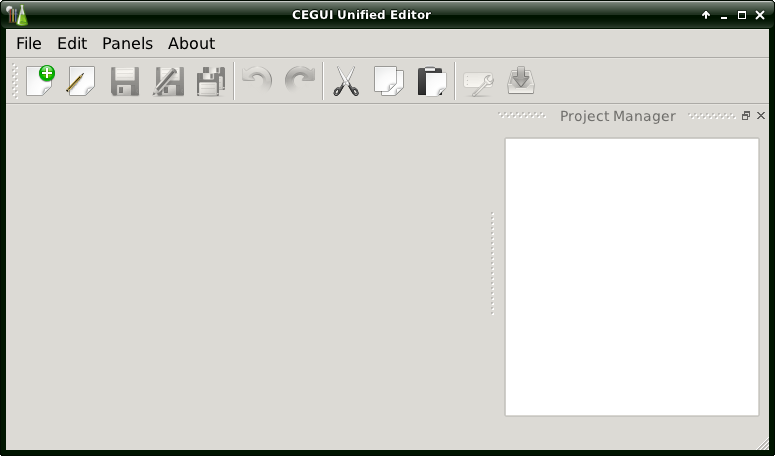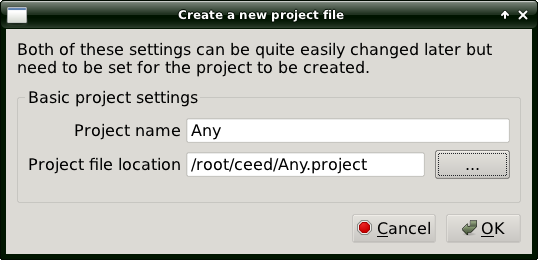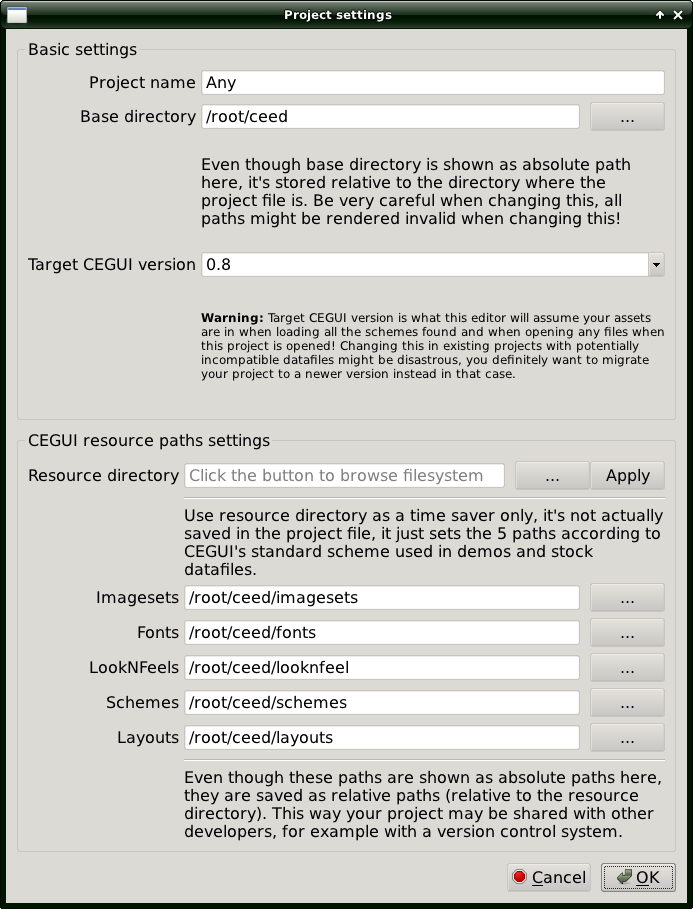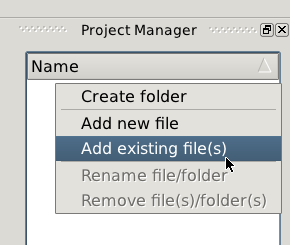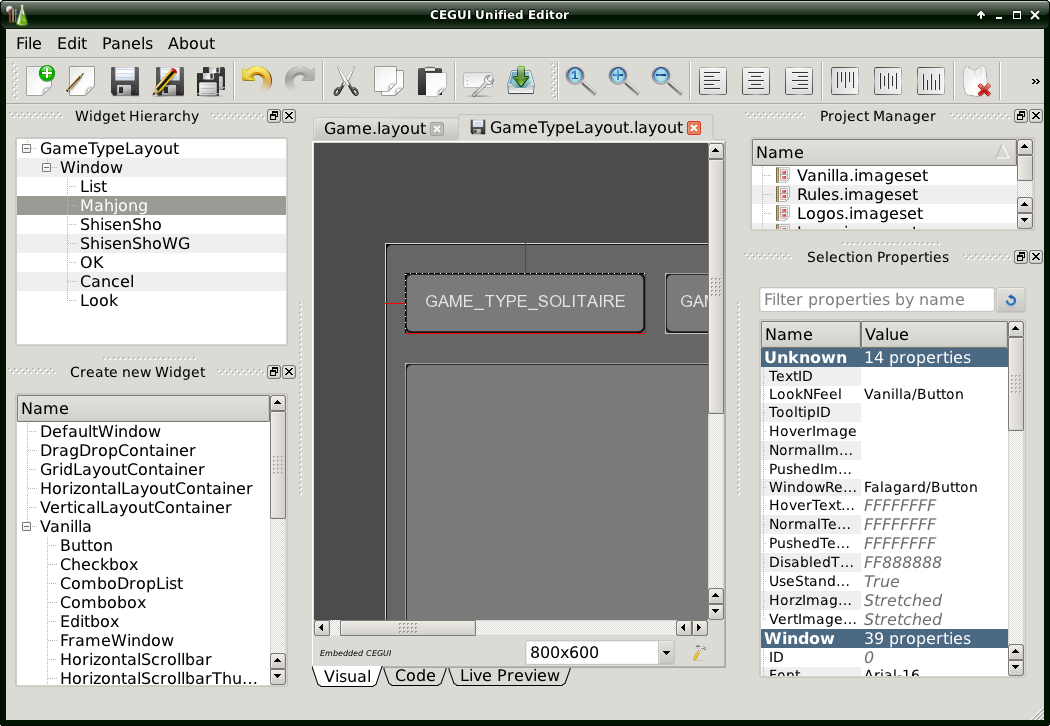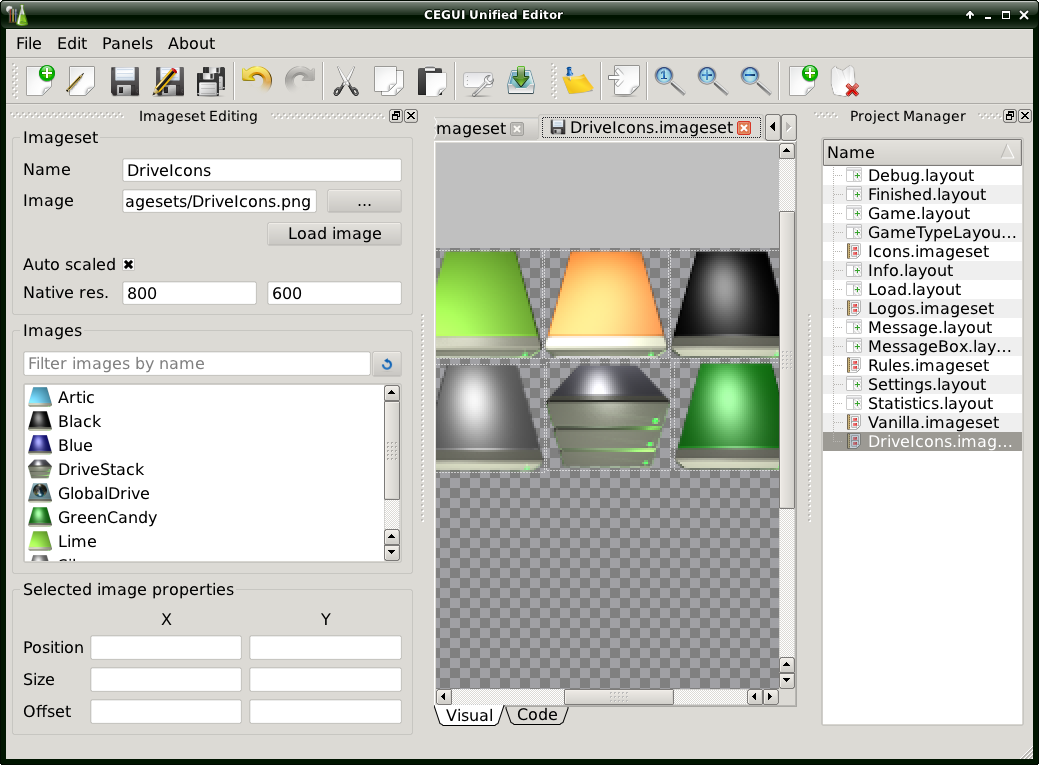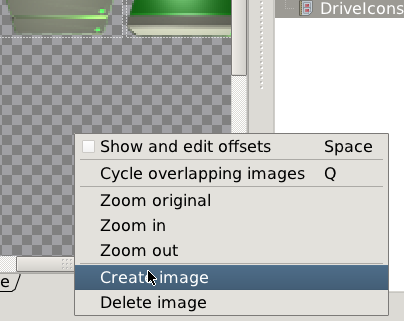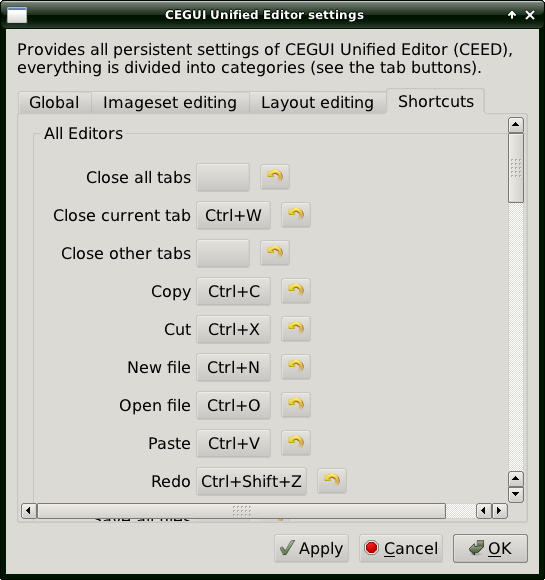Difference between revisions of "CEED"
m (→Arch Linux) |
|||
| Line 20: | Line 20: | ||
You need at least python2, boost, python-opengl, pyside (AUR), pyside-tools (AUR). PySide will bring in several other packages and will probably take a few hours to compile. | You need at least python2, boost, python-opengl, pyside (AUR), pyside-tools (AUR). PySide will bring in several other packages and will probably take a few hours to compile. | ||
| + | |||
| + | Note: You probably need to add "-DPYTHON_EXECUTABLE=/usr/bin/python2" (without the quotes) to the cmake command line below because Arch Linux defaults to python 3 but the python modules CMake script expects python2. | ||
==== Fedora ==== | ==== Fedora ==== | ||
Revision as of 15:16, 15 December 2011
Upcoming CEGUI unified editor. Currently in the early stages. Includes project management and multi-file/multi-tab editing.
Contents
Install
CEED depends on an yet unreleased CEGUI 0.8, so you will need to set up a special environment to run it.
Dependencies
You need CMake, Python >= 2.6, PyOpenGL, PySide (+ utils/tools), Boost.Python.
Debian Wheezy
PySide is part of Sid at the moment, so you have to add its repository address to your /etc/apt/sources.list
apt-get install cmake python-opengl pyside-tools boost-python
Arch Linux
You need at least python2, boost, python-opengl, pyside (AUR), pyside-tools (AUR). PySide will bring in several other packages and will probably take a few hours to compile.
Note: You probably need to add "-DPYTHON_EXECUTABLE=/usr/bin/python2" (without the quotes) to the cmake command line below because Arch Linux defaults to python 3 but the python modules CMake script expects python2.
Fedora
You need boost-devel, python-devel, python-opengl, python-pyside, pyside-tools
Build CEGUI and PyCEGUI
mkdir -p cegui_mk2/build hg clone http://crayzedsgui.hg.sourceforge.net/hgroot/crayzedsgui/cegui_mk2 cegui_mk2/cegui hg clone http://crayzedsgui.hg.sourceforge.net/hgroot/crayzedsgui/CEED cd cegui_mk2/build cmake -DCEGUI_BUILD_PYTHON_MODULES=ON ../cegui make
Launch
cd CEED ./runwrapper.sh python CEED.py
or
$ cd CEED/bin $ PYTHONPATH=../../cegui_mk2/build/lib:../:$PYTHONPATH python2 ./ceed-gui
You will see a window like this:
Troubleshooting
- If it fails to import ceed.ui.* then you probably need to edit version.py and set CEED_developerMode to True.
$ nano ../ceed/version.py
- If the data files are missing you need to run the 'maintenance' script like this:
[CEED/bin]$ cd .. [CEED]$ python2 ./maintenance fetch-datafiles
Project
Unlike old editors (CELayoutEditor and CEImagesetEditor), CEED has a notion of a project. Each project has its own combination of resources and runs its own CEGUI version to render your CEGUI resources. This allows you to have more that one scheme loaded at a time.
To create a new project, you should go to File -> New project.
The dialog appears. You should input project name and location of the ".project" file. Note: parent directory of the ".project" file must exist.
After you press OK, Project settings window appears.
Project settings
(The window is also accessible from Edit -> Project settings)
CEED can create assets for CEGUI versions: 0.6 to 0.8. 0.7 is the latest stable, so select it.
Point "Resource directory" to the place where "fonts", "schemes" and the rest directories are located, then press Apply. It will change the paths below.
Press OK and will load your resources. If it fails to, it will show you a warning dialog:
In our case, the resource directory does not have "schemes" subdirectory, as noted on the last line. Correct the paths and retry.
Project resources
Currently CEED can only work with imagesets and layouts. Add them to your project by clicking with the right mouse button on Project manager and selecting Add existing file(s):
Select the necessary imagesets and layouts, and save the project.
Layouts
To create a new widget, drag it from the left bottom panel.
To edit it, you can either do it visually, or switch to "Code" tab seen below, and edit it manually. There's also "Preview" tab, where you can test your layout in real time.
Imagesets
To create a new image, press tool bar button second from the right, or click with the right mouse button on the image itself and select Create image:
It creates a 50 x 50 rectangle centered at where mouse cursor is. Move and resize it as you see fit.
Settings
Go to Edit -> Application settings.
There are many settings you can tweak. One of the most important might be Shortcuts. It allows you to assign shortcuts to zoom, image creation, opening a project, and so on.
Notes
Currently you may have problems with Imagesets that use TGA, since some versions of Qt may be built without TGA support. CEGUI 0.8 has all imagery as PNG (CEGUI 0.7 used TGA), and we advise you to use PNG instead of TGA.
